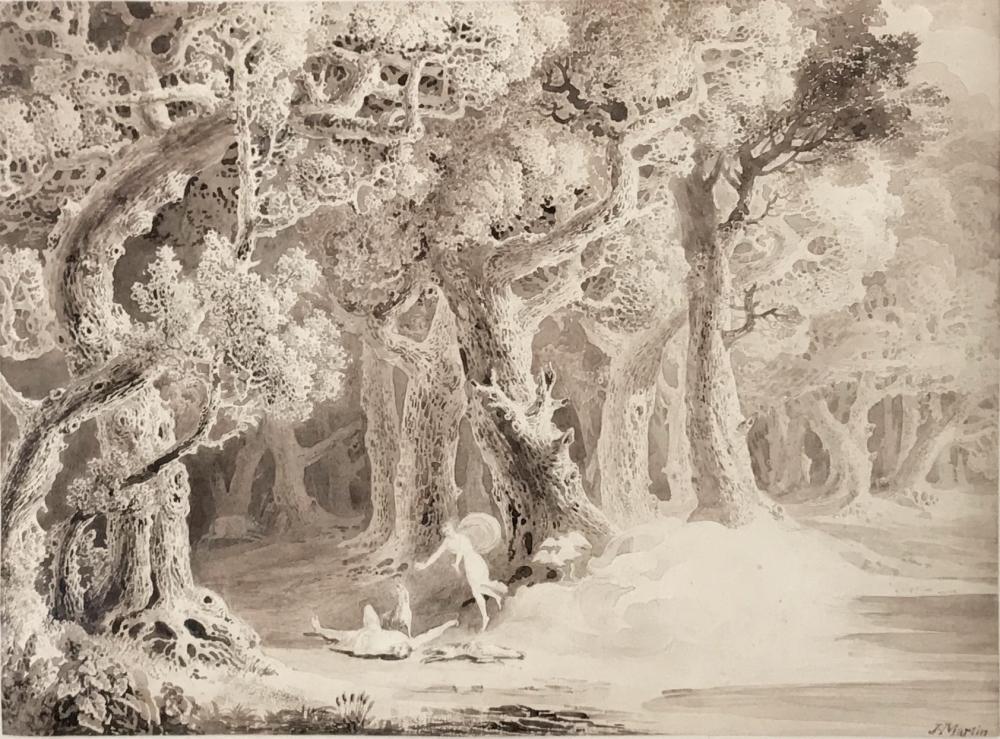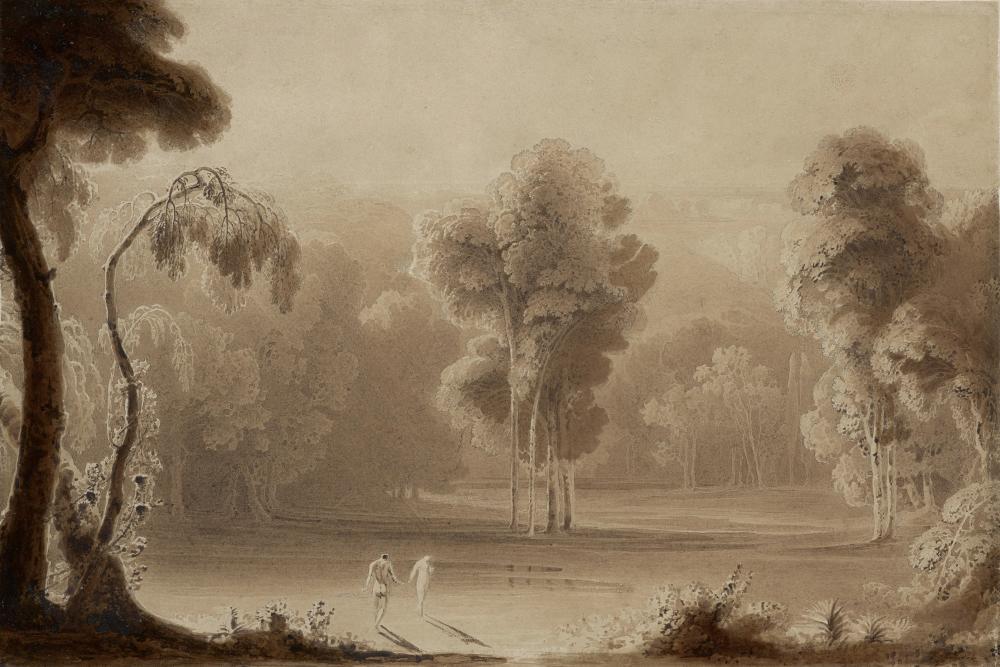JOHN MARTIN
(1789-1854)
Diogenes throwing away his Cup
Provenance
Private Collection, UK
John Martin became one of the most popular British artists of the early 19th century, producing ‘sublime’ scenes of Biblical catastrophe and apocalypse which provoked and challenged fellow artists, writers, architects and engineers. Later in the century, his reputation was high in America where the images and techniques of Martin contrived to the concept of the ‘American sublime’. While his work fell out of favour in the early 1900s, the resurgent popularity of his art was firmly re-established by the beginning of the current century.
Painted in 1833, the year in which Martin was awarded the gold medal for his painting of The Fall of Nineveh at the Brussels salon, the present lot depicts the movement when Diogenes, Greek philosopher and founder of the Cynic movement in Ancient Greece, discovers a young man drinking from his hands, is seen throwing away his cup and utters the words “a child has beaten me in plainness of living”.
Diogenes features in a number of paintings and engravings by and after John Martin. Martin himself made at least six versions of the subject Alexander and Diogenes, including at least one other watercolour version of this precise subject of Diogenes throwing away his Cup. The source for Martin’s design is believed to be the famous painting by Nicolas Poussin entitled Diogenes in a landscape or Diogenes throwing away his Scoop (c.1647, Musee du Louvre, Paris) which would have been well known to Martin through the various reproductive engravings of it available at the time. Martin is known to have been a great enthusiast of Poussin’s works and his own works were often linked with those of Poussin by contemporary commentators (see for example Edward Bulwer Lytton, England and the English, 1833).
The background setting for the present lot is Martin’s imagined reconstruction of the ancient city of Athens, with the Parthenon standing prominent. A closely related watercolour, of very similar dimensions, which shows another of his reconstructions of ancient Athens is Epicureans in the garden of the Academy at Athens at auction in 2005 under the title Figures in gardens below Athens. Various parts of the Parthenon had arrived in England during the first twenty years of the century and their exhibition had been hugely influential on art in this country over the following decade or so. Similar Greek-inspired temples can be found throughout Martin’s works from his early compositions around 1810, through the 1820s (for example The Paphian Bower) right up until his final works such as The Last Judgement (Tate Britain).


